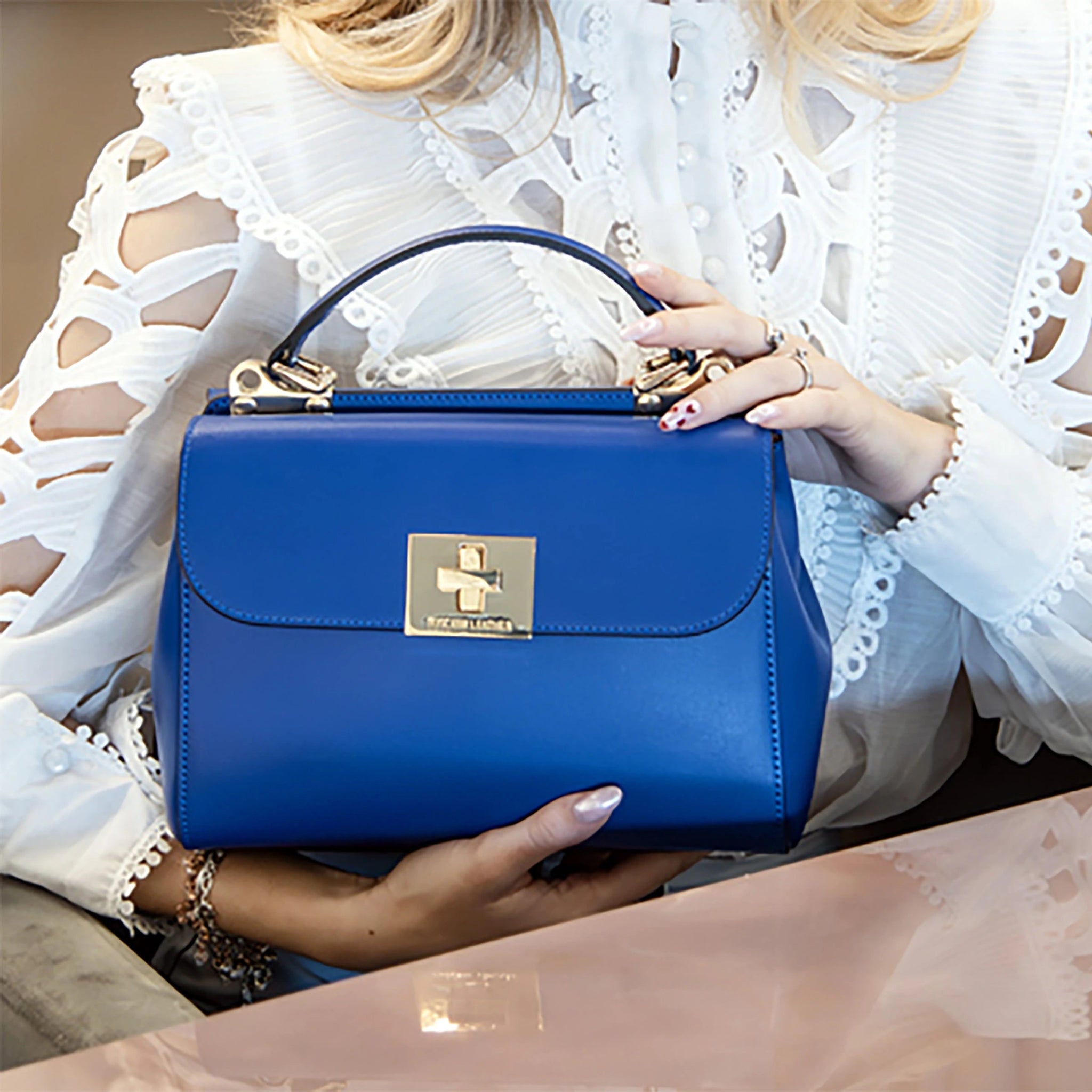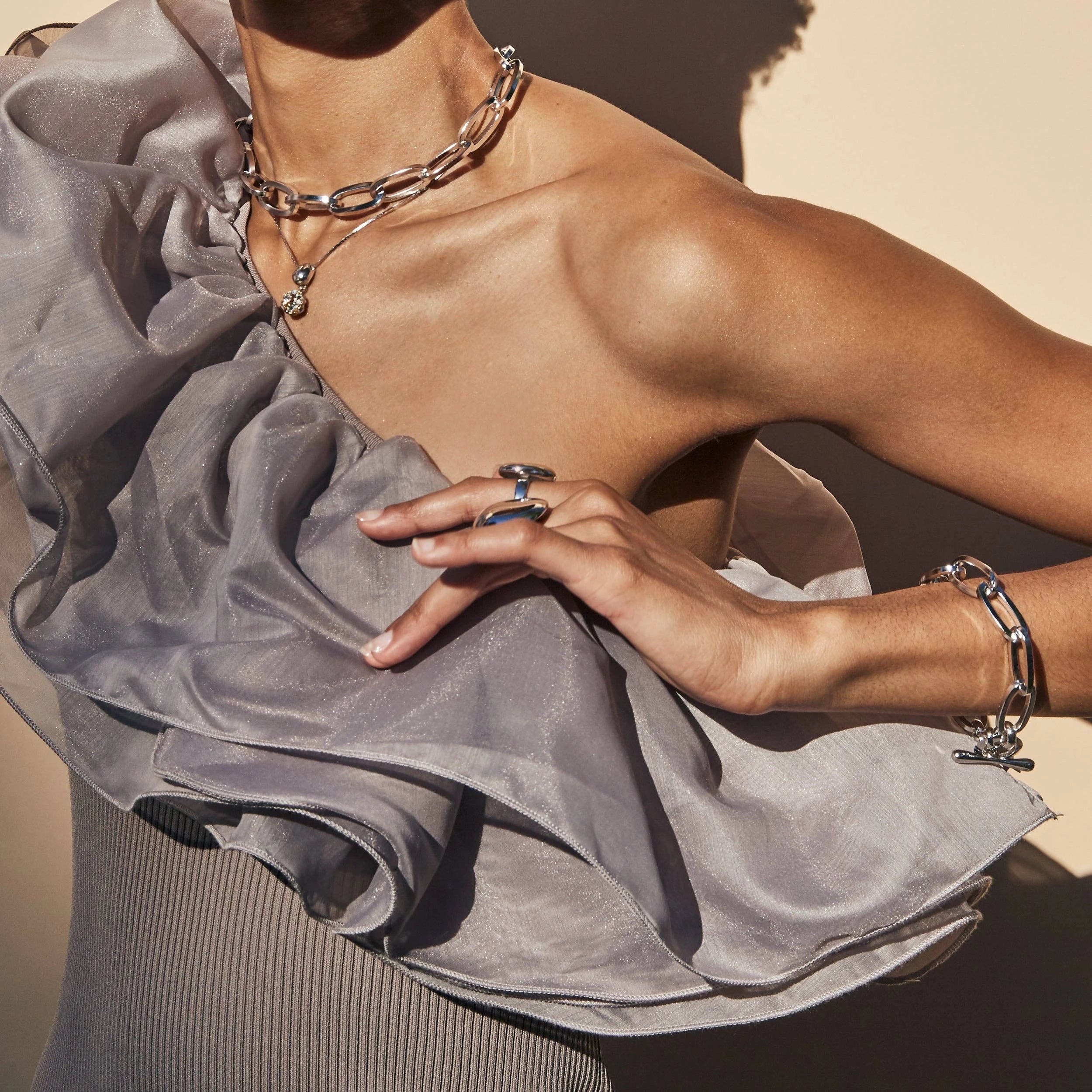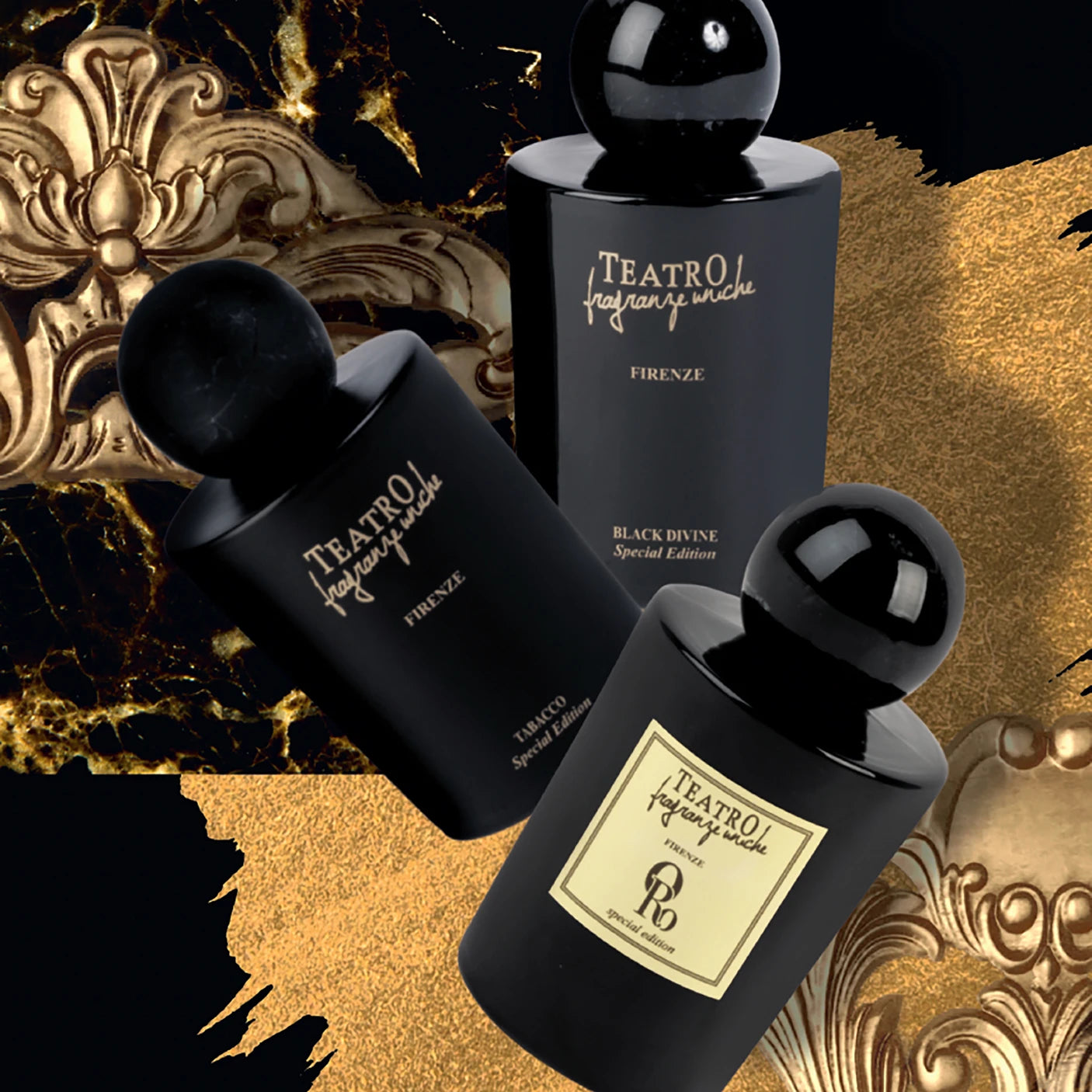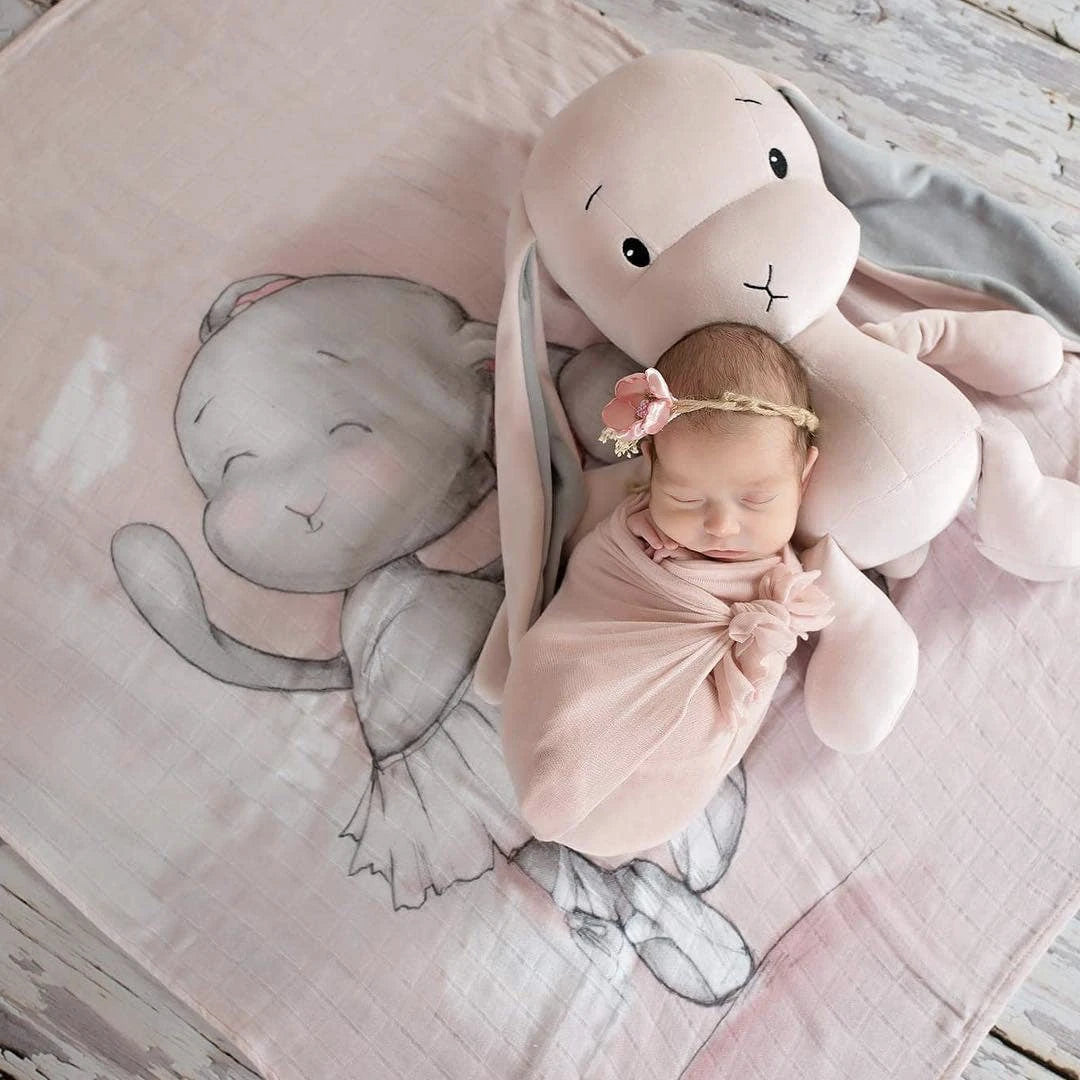The Art of Handcast Jewelry: Honoring Tradition, Craft, and Timeless Design
“In every handcast piece, there is a story of fire, patience, and artistry — a quiet celebration of imperfection and the enduring beauty of craft.”

At L’Atelier Global, we proudly partner with artisans who embody true craftsmanship. One such brand is Maslo Jewelry, whose minimal, sculptural designs are created through the timeless technique of handcast jewelry. Through this art form, Maslo and other makers preserve the beauty of slow fashion — jewelry created by hand, with intention, individuality, and care.
In this blog, we explore the world of jewelry handcasting — a process that transforms molten metal into personal heirlooms and celebrates the artistry that mass production can never replicate.
What Is Handcast Jewelry?
Handcast jewelry is one of the oldest and most revered techniques in fine craftsmanship.
Each piece is individually created by sculpting a wax model, building a mold around it, and pouring molten metal into the mold to capture every fine detail.
The traditional steps for creating handcast jewelry include:
Sculpting a wax model of the desired design
Building a custom mold around the wax form
Burning out the wax to leave a hollow space
Casting molten metal into the mold cavity
Revealing, finishing, and polishing the final piece by hand
Each creation of this beautiful art form carries subtle variations, organic forms, and a tactile quality that no machine could ever reproduce.
A Brief History of Handcast Jewelry
The tradition of handcast jewelry dates back thousands of years, connecting modern artisans to ancient makers across cultures and continents. One of the earliest known examples of casting techniques in jewelry comes from ancient Mesopotamia, where goldsmiths used primitive molds to shape intricate gold ornaments. By carefully melting and pouring precious metals into carved stone or clay molds, early civilizations discovered how to transform raw materials into beautiful, enduring forms.
The most influential development in the history of handcast jewelry was the lost-wax casting method, believed to have originated over 6,000 years ago. In this technique, artisans sculpted a model of the piece in beeswax, encased it in a clay or plaster mold, and then heated the mold to melt and remove the wax. Molten metal was then poured into the hollow space left behind, creating a highly detailed replica of the original wax design.
This revolutionary method allowed for much greater intricacy and artistry than simple hammering or cutting, and it remains the foundation of handcasting today.
Lost-wax casting spread from Mesopotamia to Egypt, Greece, and Rome, becoming a defining technique of fine metalwork throughout antiquity. Ancient Egyptian jewelers used it to craft elaborate amulets and ceremonial jewelry; Roman artisans employed it for rings, brooches, and coins; and Indian goldsmiths refined it into an art form for temple jewelry and royal adornment.
Throughout the Middle Ages and Renaissance, the tradition of handcast jewelry continued to evolve, enhanced by improvements in metallurgy and mold-making. Guilds of goldsmiths and silversmiths preserved and perfected the technique, passing down the secrets of casting through generations.
Today, even as technology offers faster methods of mass production, the handcasting process remains revered among artisans. It continues to embody a link between ancient craftsmanship and modern artistry — a reminder that some of the most beautiful creations still begin with molten metal, patience, and the touch of a human hand.
Choosing handcast jewelry is not just an aesthetic choice; it is a connection to centuries of tradition, skill, and creative spirit — a living bridge between past and present.
Why Handcast Jewelry Matters
In an age of mass production, handcast jewelry offers a rare and meaningful alternative.
Each piece is a celebration of individuality, tradition, and connection to the artisan’s hand.
Authenticity Over Perfection
Rather than striving for mechanical precision, handcast jewelry embraces organic beauty. Slight asymmetries, soft curves, and textural details highlight the human touch behind every creation, giving the wearer a true piece of art.
Strength and Durability
Because it is crafted with patience and attention, handcast jewelry has a density and resilience that ensures it lasts a lifetime. These pieces are not made for trends — they are made for a lifetime of wear, and often become treasured heirlooms.
A Personal Connection
Wearing handcast jewelry fosters a deeper bond between the wearer and the maker. Every curve, every polish, every mark left behind tells a story of careful creation — making each piece not just jewelry, but a living memory.
“Handcasting is not just a technique — it is the art of capturing a fleeting moment of creation in metal, shaped by human hands and timeless intention.”
The Beauty of Handcast Jewelry Design
The organic forms and textures that characterize this jewelry are part of what make it so beloved:
-
Sculptural Forms:
With rounded edges, soft domes, and flowing curves, handcast jewelry feels sculptural, almost like a small wearable piece of art.
-
Minimalist Statements:
Clean designs allow the natural material and craftsmanship to shine. Handcast jewelry speaks with quiet strength and refined simplicity.
-
Textural Depth:
The surface of handcast jewelry often reveals delicate brushstrokes, subtle textures, or slight variations — signatures of true craftsmanship.
-
Effortless Versatility:
Whether worn alone or layered, handcast jewelry seamlessly transitions from day to night, casual to formal, always adding a thoughtful touch to any outfit.
Caring for Handcast Jewelry
Maintaining the beauty of this jewelry is simple with a few mindful steps:
-
Gently Clean:
Use a soft cloth and mild soapy water to clean your pieces. Handcast jewelry deserves delicate handling to preserve its unique texture.
-
Store Thoughtfully:
Keep your jewelry in soft pouches or lined jewelry boxes to avoid scratches and maintain its natural glow.
-
Celebrate the Patina:
Over time, handcast jewelry may develop a soft, lived-in patina — a testament to the life and experiences of the wearer.
A Return to Meaningful Craftsmanship
At L’Atelier Global, we curate pieces that honor these enduring principles of craftsmanship and authenticity.
Maslo Jewelry exemplifies this spirit through their sculptural, minimal collections — crafted slowly, by hand, using techniques that respect both tradition and individuality. Every curve, every surface tells a quiet story of intentional design and human touch.
When you invest in handcast jewelry, you are choosing more than a beautiful object — you are embracing a story, a connection to ancient artistry, and a work of art that evolves with you over time.
Even today, as technology offers faster and cheaper methods of production, the handcasting process remains revered among artisans. It continues to bridge ancient craftsmanship with modern artistry — a testament that the most beautiful creations still begin with molten metal, patience, and the skilled hands of a maker.
Choosing handcast jewelry is a conscious decision: a celebration of heritage, skill, and creative spirit. It is a living bridge between past and present — one that continues to inspire modern artisans and jewelry lovers around the world.









Leave a comment
This site is protected by hCaptcha and the hCaptcha Privacy Policy and Terms of Service apply.